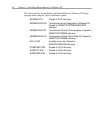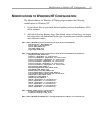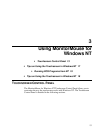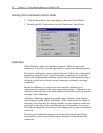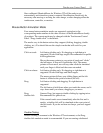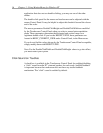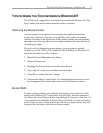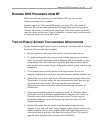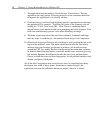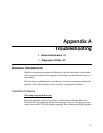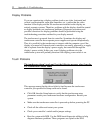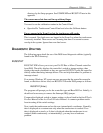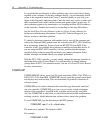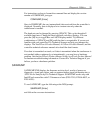
18 Chapter 3 - Using MonitorMouse for Windows NT
Scrolling
Scrolling lists can be performed by touching the scroll bars, as you would with the
mouse. Some lists can be scrolled more easily by touching the data area, sliding
your finger to an edge, then continuing to slide outside the area. This technique
works in drop-down lists, for example. In fact, the farther away you slide from the
list, the faster the data scrolls.
Maximizing Windows
To maximize a window, double-tap on the window's title bar, rather than tapping
the Maximize button. Likewise, to restore a maximized window to its previous
size, double-tap its title bar instead of tapping the Restore button. You can also
use the Control menu to maximize, minimize, and restore windows.
Using the Overscan Area
MonitorMouse for Windows NT pushes all touches in the display's overscan area
within the screen image. This effectively enlarges the active touch area of zones
on the edges of the image. You may touch the edges and corners of the CRT face
to easily click on items displayed at the extremes of the image. For example,
when a window is maximized, you may touch the upper-right corner to restore the
window, touch the top to click on the window title, and double-tap the upper-left
corner to close the window.
Option Buttons and Check Boxes
It is easier to select an option by touching the option name rather than touching
the option button. The same is true with check boxes.
Choosing the Control Buttons on Window Title Bars
Windows can be maximized and restored easily by double-tapping the title bar as
described above. The Minimize, Maximize, and Close buttons, and the Control-
menu can be difficult to touch, as they are quite small on high-resolution screens.
Since they all act on button release, you can slide among them before selecting as
with the drop-down menus. You can also use the Control menu to easily
maximize, minimize, restore, and close windows.



